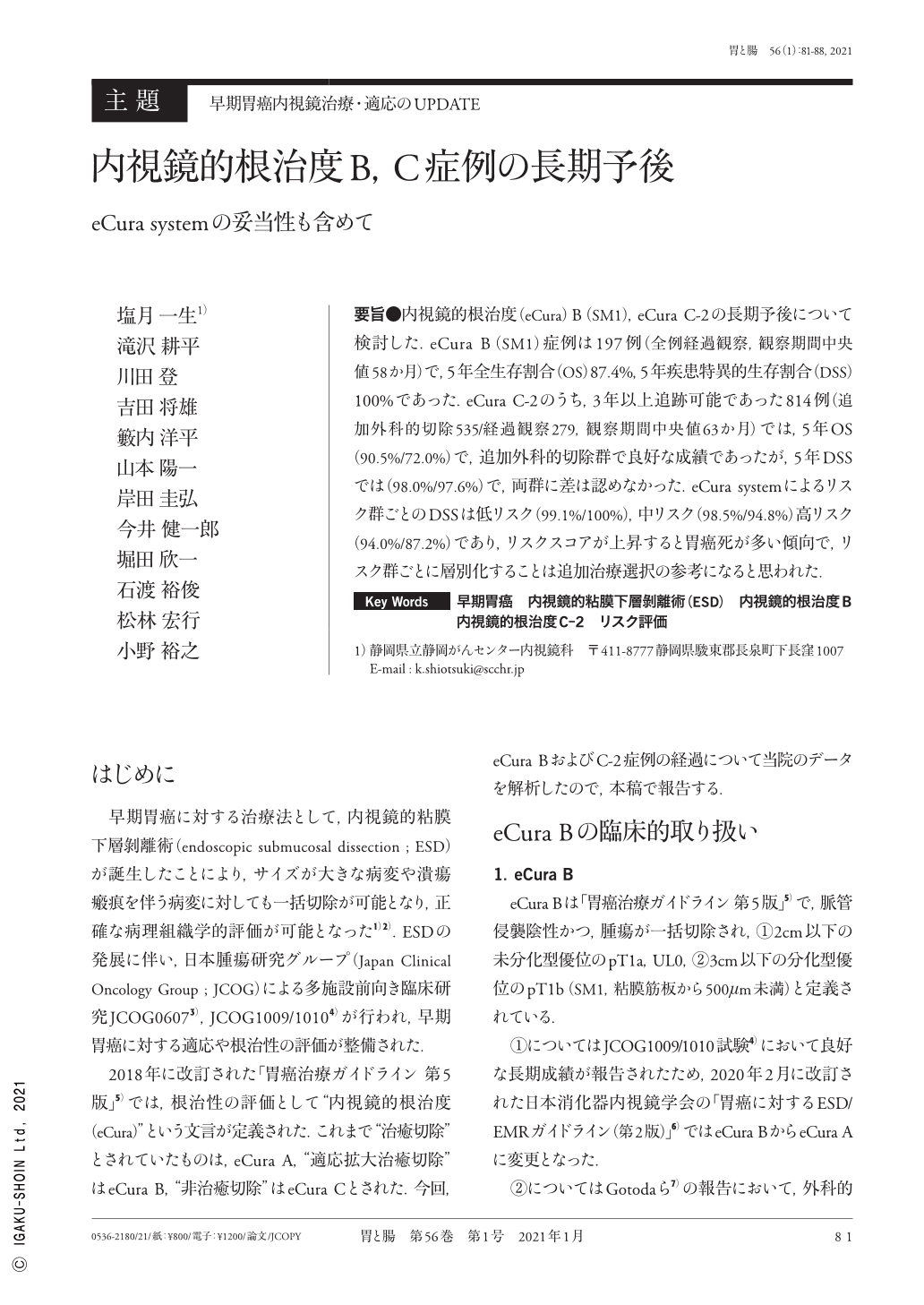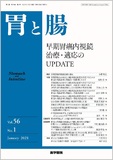Japanese
English
- 有料閲覧
- Abstract 文献概要
- 1ページ目 Look Inside
- 参考文献 Reference
要旨●内視鏡的根治度(eCura)B(SM1),eCura C-2の長期予後について検討した.eCura B(SM1)症例は197例(全例経過観察,観察期間中央値58か月)で,5年全生存割合(OS)87.4%,5年疾患特異的生存割合(DSS)100%であった.eCura C-2のうち,3年以上追跡可能であった814例(追加外科的切除535/経過観察279,観察期間中央値63か月)では,5年OS(90.5%/72.0%)で,追加外科的切除群で良好な成績であったが,5年DSSでは(98.0%/97.6%)で,両群に差は認めなかった.eCura systemによるリスク群ごとのDSSは低リスク(99.1%/100%),中リスク(98.5%/94.8%)高リスク(94.0%/87.2%)であり,リスクスコアが上昇すると胃癌死が多い傾向で,リスク群ごとに層別化することは追加治療選択の参考になると思われた.
We retrospectively reviewed the data of patients diagnosed curability B(pT1b SM1)and curability C-2 and investigated long-term outcomes using the Kaplan−Meier method. A total of 197 patients were diagnosed curability B(pT1b SM1) ; the 5-year OS(overall survival)was 87.4%, and the 10-year DSS(disease-specific survival)was 96.8%. A total of 814 patients were diagnosed curability C-2. We compared the 5-year OS and 5-year DSS between patients undergoing radical surgery and those with no additional treatment. The 5-year OS rates in patients undergoing radical surgery and those with no additional treatment were 90.5% and 87.2%, respectively(p<0.01). However, the respective 5-year DSS rates were 98.0% and 97.6%, and there was no significant difference(p=0.53). Therefore, we classified the DSS into three groups using the eCura system. Accordingly, the 5-year DSS rates in patients undergoing radical surgery and those with additional treatment in the low-risk, intermediate-risk, and high-risk categories were 99.1% and 100%, 98.5% and 94.8%, and 94.0% and 87.2%, respectively. The 5-year DSS rates in patients with no additional treatment in the intermediate- and high-risk categories were lower than those in patients undergoing radical surgery. With an increase in the risk score of the eCura system, the risk for gastric cancer-related death also increased. Therefore, the eCura system is useful for selecting additional treatment after diagnosed curability C-2.

Copyright © 2021, Igaku-Shoin Ltd. All rights reserved.


